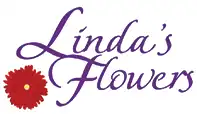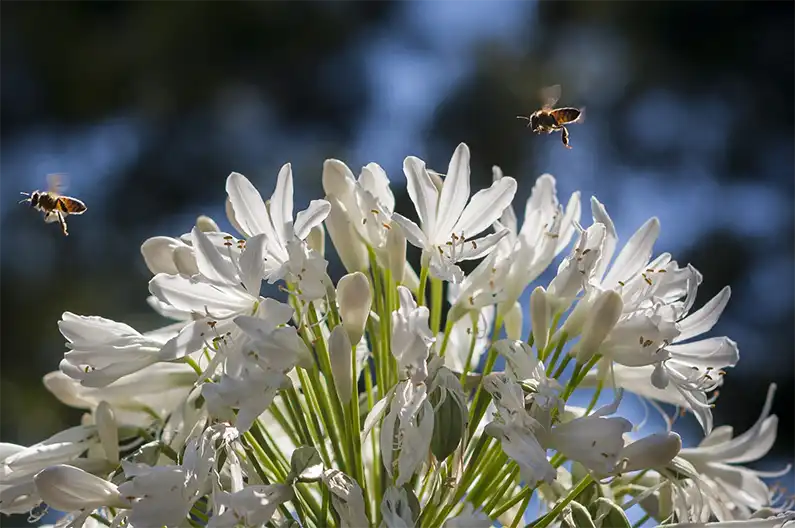As summer winds down in Springfield, MO, and the surrounding Ozarks, many plants have finished their blooming cycles.
However, this doesn’t mean your garden has to stop buzzing with life!
In Missouri, the blooming cycle for flowers typically begins in early spring with cool-season varieties like daffodils and tulips, followed by a diverse range of wildflowers and perennials that thrive in the state’s temperate climate.
By mid to late summer, many early bloomers have finished their cycle, giving way to late-blooming plants like coneflowers, asters, and goldenrods.
As temperatures cool in the fall, blooming slows down, with a few hardy varieties continuing to flower until the first frost arrives.
Late-blooming, bee-friendly flowers can provide crucial nectar and pollen for pollinators like bees, butterflies, and more, helping them prepare for the colder months ahead.
Here are some of the best options to plant in your garden to support local wildlife while enjoying beautiful blooms.
Native Late Summer Flowers Perfect for the Ozarks:
Here, we’re going to highlight flowers that are native to Missouri and thrive in the local climate.
Purple Coneflower (Echinacea purpurea)
Description: A hardy perennial known for its vibrant purple petals and cone-shaped center. This flower tolerates full sun to partial shade and attracts a wide range of pollinators, including bees and butterflies.
Bloom Period: Mid to late summer.
Pollinator Appeal: Bees, butterflies, and beetles love the subtle fragrant flowers. Finches often feed on the seeds.
Tall Boneset (Eupatorium altissimum)
Description: Often found in wildflower gardens, Tall Boneset thrives in full sun to partial shade. It produces clusters of small white flowers that are a magnet for bees, wasps, flies, and butterflies.
Bloom Period: Late summer to early fall.
Pollinator Appeal: Nectar attracts a diverse range of pollinators, making it a key player in any bee-friendly garden.
Spotted Joe Pye Weed (Eutrochium maculatum)
Description: This native perennial features purplish-pink flowers that bloom from mid to late summer. It thrives in full sun and can tolerate moist soils, making it ideal for rain gardens.
Bloom Period: Mid to late summer.
Pollinator Appeal: Provides both nectar and pollen, attracting bees, butterflies, skippers, moths, and bee flies.
Wild Bergamot (Monarda fistulosa)
Description: Known for its unique lavender-pink blooms and aromatic foliage, Wild Bergamot flourishes in full sun and medium, well-drained soils.
Bloom Period: Mid-summer, typically flowering for about a month.
Pollinator Appeal: Attracts bees, butterflies, and hummingbirds, and serves as a host plant for several moth species.
New England Aster (Symphyotrichum novae-angliae)
Description: With its showy purple flowers, New England Aster provides essential nectar for monarch butterflies migrating south to Mexico.
Bloom Period: Late summer to early fall.
Pollinator Appeal: Highly attractive to bees and butterflies, providing both nectar and pollen.
Additional Bee-Friendly Options
Now, let’s highlight a few other types of flowers that can thrive in the Ozarks and benefit local pollinators.
Autumn Joy Stonecrop (Sedum ‘Autumn Joy’)
Large, rose-pink flower heads attract honeybees and butterflies.
Its late summer blooms provide a much-needed nectar source as other flowers begin to fade.
Lacey Blue Russian Sage (Perovskia atriplicifolia)
This hardy perennial thrives in full sun and dry soil.
Its purple-blue flowers attract honeybees, leaf-cutter bees, and butterflies, and its long bloom time from mid-summer to fall ensures continuous nectar supply.
Ruby Charm Helen’s Flower (Helenium autumnale)
Also known as Sneezeweed, its daisy-like flowers bloom from late summer into fall and are irresistible to bees, wasps, and butterflies.
Tips for a Bee-Friendly Garden
Maintaining an flourishing bee-friendly garden doesn’t need to be rocket science. In fact, by following a few simple rules of thumb, you might be surprised at how manageable this type of garden really is.
Here are some tips to get you started.
- Provide a Variety of Blooms: Planting a mix of native and well-adapted plants that bloom at different times will ensure a steady supply of nectar and pollen throughout the season.
- Create Layers: Incorporate flowers of various heights and types (ground covers, perennials, shrubs) to offer diverse foraging opportunities.
- Avoid Pesticides: Opt for organic gardening methods to protect bees and other beneficial insects from harmful chemicals.
Conclusion:
By planting these late summer bee-friendly flowers in your Ozark garden, you can create a vibrant, thriving ecosystem that supports local pollinators and adds beauty to your landscape.
We here at Linda’s Flowers are certainly invested in maintaining our bee population to the fullest extent possible, so we hope this article helps those who feel likewise!

